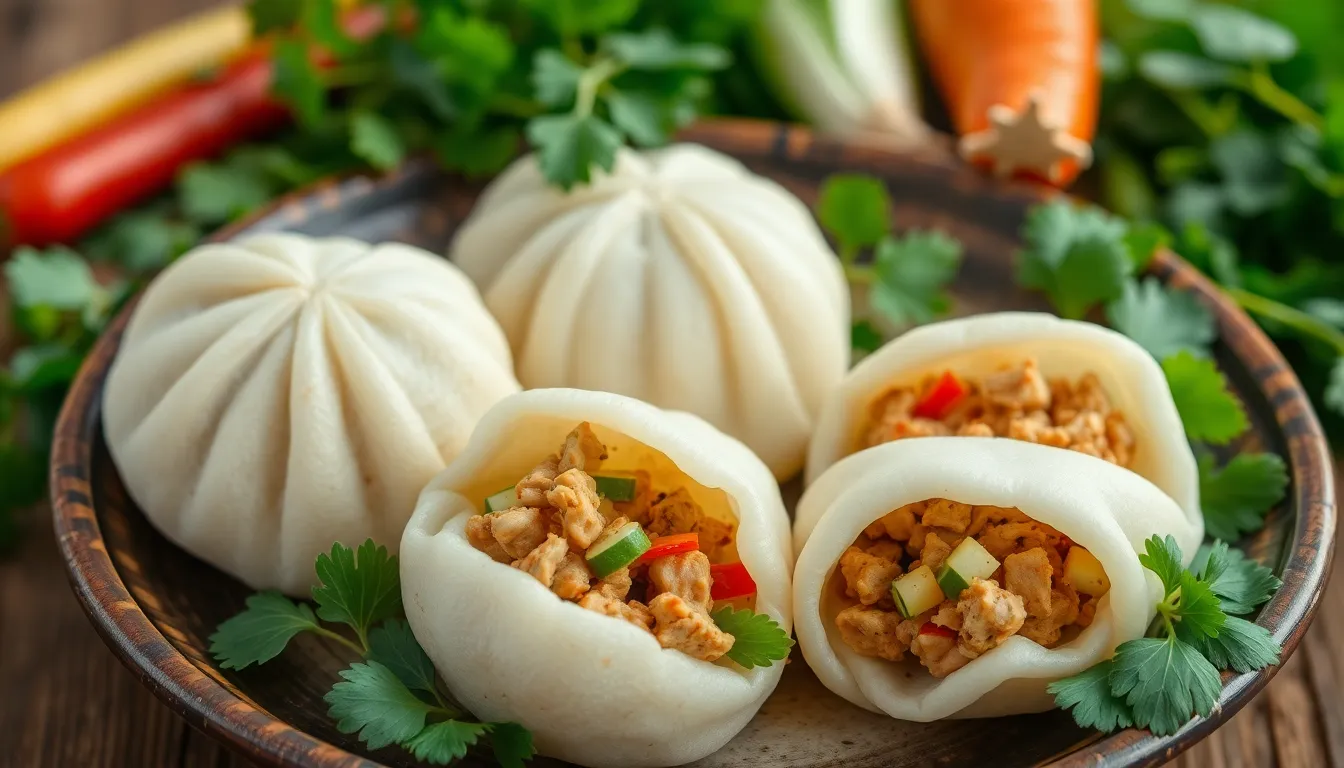Table of Contents
ToggleIn the vibrant streets of Myanmar, a culinary gem awaits those daring enough to try it—hingagyi. This delightful dish isn’t just a meal; it’s an experience that dances on the taste buds and leaves a lasting impression. Imagine sinking your teeth into a warm, fluffy bun filled with a savory blend of ingredients that could make even the pickiest eaters reconsider their life choices.
Hingagyi isn’t your everyday fare; it’s the kind of food that sparks joy and laughter, often shared among friends and family. Whether you’re a seasoned foodie or just looking to spice up your dinner routine, hingagyi promises a flavor adventure that’s hard to resist. So, get ready to embark on a delicious journey through Myanmar’s culinary landscape, where hingagyi reigns supreme and every bite tells a story.
Overview of Hingagyi
Hingagyi stands out as a beloved dish in Myanmar’s culinary landscape. This delightful bun features a warm, fluffy exterior that enchants diners. Filled with a mixture of savory ingredients, it offers a unique flavor profile appreciated by many. Common fillings include meat, vegetables, and spices, which create a harmonious blend of tastes.
Traditionally enjoyed as a snack or light meal, hingagyi plays a vital role in social gatherings. Families often make this dish together, transforming cooking into a shared experience. Streets and markets frequently display vendors selling freshly made hingagyi, attracting locals and tourists alike.
The preparation process involves steaming the buns, which contributes to their soft texture. Chefs emphasize freshness by using locally sourced ingredients, enhancing the dish’s appeal. In many households, hingagyi signifies warmth and togetherness, making it a favorite for festive occasions.
Exploring the variations of hingagyi across regions reveals diverse interpretations. Different areas incorporate unique spices or cooking techniques, reflecting local culinary traditions. As a result, each bite offers a taste of Myanmar’s rich heritage.
Food enthusiasts find enjoyment in discovering hingagyi at local markets or restaurants. They appreciate not only the taste but also the cultural significance. Overall, hingagyi embodies the spirit of Myanmar’s food culture, inviting everyone to experience its delicious offerings.
Ingredients Used in Hingagyi

Hingagyi consists of a variety of ingredients that contribute to its unique flavor profile and texture. Each component plays a role in creating this beloved dish.
Key Components
The primary component of hingagyi is the bun, which is made from flour, water, and yeast. This combination creates a soft and fluffy texture when steamed. Inside, fillings typically include minced meat such as chicken or pork, alongside diced vegetables like onions and carrots. Some variations incorporate beans or eggs for added protein. Local herbs enhance the filling’s freshness. Variants across regions offer diverse ingredient combinations, reflecting culinary traditions.
Spices and Flavorings
Spices elevate the overall taste of hingagyi. Commonly used spices include garlic, ginger, and black pepper, which add a rich depth of flavor. Turmeric might appear for its warm color and mild earthiness. In certain recipes, chili powder or fresh green chilies introduce heat, catering to diverse palates. Traditional seasonings like soy sauce or fish sauce often enhance the umami profile. These spices and flavorings combine harmoniously, making each bite of hingagyi unforgettable.
Preparation Process
Hingagyi preparation emphasizes simplicity and technique. Steaming plays a crucial role in achieving the desired fluffy texture.
Cooking Techniques
First, prepare the dough by combining flour, water, yeast, and a pinch of salt. Kneading the dough activates gluten, ensuring a soft consistency. After allowing it to rise for about an hour, divide the dough into small portions. Next, flatten each piece and fill it with the savory mix of minced meat, vegetables, and spices. Sealing the filled dough properly prevents any filling from escaping during cooking. Steaming the buns for approximately 15 to 20 minutes results in a warm, tender delicacy that retains its flavors.
Serving Suggestions
Traditionally, hingagyi is served warm, often on a shared platter. Accompanying it with dipping sauces, such as soy sauce or a chili paste, enhances its flavor. Guests often enjoy pairing hingagyi with tea or coffee, making it suitable for both casual meals and social gatherings. Adding a side of fresh herbs or pickled vegetables complements the rich flavors of the bun. Finding creative variations with different fillings appeals to diverse tastes, allowing everyone to enjoy this beloved dish.
Cultural Significance
Hingagyi holds a special place in Myanmar’s culinary culture, symbolizing communal spirit and shared experiences. Communities often come together during its preparation, transforming cooking into a social gathering. Families pass down recipes through generations, reinforcing traditional practices.
Festivals and celebrations frequently feature hingagyi, adding to its cultural value. The dish is often served during holidays and family reunions, where its warm, fluffy texture evokes feelings of comfort and nostalgia. Street vendors play a key role in making this dish accessible, enticing locals and tourists alike.
Versatility enhances its popularity, with various fillings allowing for personal and regional preferences. Different areas of Myanmar showcase unique ingredient combinations, highlighting the region’s rich culinary diversity. Hingagyi invites creativity, as cooks experiment with flavors to delight varying palates.
Social interactions revolve around this dish, making it a focal point during gatherings. Conversations often take place over shared platters of hingagyi, fostering connections among friends and family. Its role extends beyond mere sustenance, embodying the essence of hospitality.
Throughout Myanmar, hingagyi has earned a reputation as both a staple snack and a beloved delicacy. This dish reflects the nation’s identity, illustrating how food can bridge cultural gaps. Enjoyment of hingagyi transcends age, bringing people together in celebration of Myanmar’s vibrant culinary heritage.
Hingagyi is more than just a dish; it’s a celebration of Myanmar’s rich culinary traditions. The warm, fluffy buns filled with savory ingredients create a unique experience that brings people together. Whether enjoyed at home or from a street vendor, hingagyi embodies the essence of community and hospitality.
The dish’s versatility allows for endless variations, catering to diverse tastes and preferences. Its presence during social gatherings and festivals highlights its significance in Myanmar’s culture. As food enthusiasts continue to explore hingagyi, they not only savor its delightful flavors but also connect with the heart of Myanmar’s culinary heritage.





